
http://www.tourism.lt/default.htm
Nature has been generous to Lithuania. Although there are no mountains or great forests, the country's beauty lies in the diversity of its landscape. This is a place of rolling hills and gentle plains; of quietly flowing rivers and of lakes which reflect the blueness of the sky. The largest river, the Nemunas, gathers and carries the waters of many tributaries to the Baltic Sea, wherein lies Lithuania's famous "amber coast". Called the Curonian Spit, it is a sixty mile-long bank of sand dunes and pine trees which stretches from the southwest to the seaport of Klaipńóda and encloses the vast Curonian Lagoon. For centuries, amber, Lithuania's precious harvest of the sea, has been washed onto these golden sands.
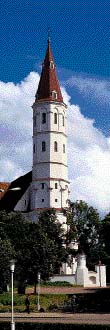



ONCE THE LARGEST EUROPEAN MEDIEVAL STATE
Emergence of a Powerful Nation
The earliest known mention of the name "Lithuania" is found in the German (Teutonic) chronicles of 1009. Lithuania emerged as a larger state in the middle of the 13th century through a union of Baltic territories with Mindaugas becoming the state's first Grand Duke. The country, however, did not adopt Christianity until 1387 and was, for the most part, under constant military attack by the Germanic Livonian and Teutonic Orders for the first 200 years of its existance as a united territory. Not only did the Teutonic and Livonian Orders fail to conquer Lithuania, but by the end of the 14th century Lithuania became one of the most powerful states in eastern Europe. In 1410, a joint Lithuanian, Polish, Russian, Tartar and Czech army under the leadership of Lithuanian Grand Duke Vytautas crushed the Teutonic Order once and for all at the battle of ŇĹalgiris (Tannenberg or Grunwald). The Grand Duchy of Lithuania was also responsible for keeping the Golden Horde from invading western Europe.
Union with Poland and Russian Annexation
The power of the Lithuanian state began to decline following the death of Grand Duke Vytautas in 1430. Disagreements among the dukes, the development of new relations with Poland and financial difficulties led the Grand Duchy of Lithuania to join with Poland in what was called the Union of Lublin in 1569. Initially, Lithuania agreed to be governed as an independent part of this joint Lithuanian-Polish state, only to later become merely one of its provinces. The life of this joint state ended with the eventual total annexation of its territories by Russia, Austria and Prussia. In 1795 during the third implementation of the partition, a large part of Lithuania was forcibly incorporated into Russia. Russia's imperial forces aimed to colonise the Lithuania and to transform the country's dominant nationality and national language. An insurrection was mounted in 1863, after which the Russian Tsar outlawed the printing of books and the public use of the Lithuanian language. It was this decison that gave impetus for the subsequent long national struggle to preserve the Lithuanian language, culture and religion (Lithuanians are predominantly Roman Catholic as opposed to their Russian Orthodox neighbours).
Independent Republic
Relief from oppression came only with the collapse of the Tsarist Russian Empire at the end of World War I. On February 16th, 1918, a group of leading Lithuanian intellectuals gathered to sign Lithuania's declaration of independence. Over the following several years most of the world's prominent nations recognized the country's statehood and, in turn, Lithuania established diplomatic and economic relations with the world abroad. During Lithuania's 22 years of independence in between the world wars, Lithuania rapidly progressed in all spheres of her national life. But then disaster struck again in 1940.
World War II
The outset of war disrupted Lithuania's further development and brought on yet another period of national subjugation. At first the country was annexed by the Soviet Union, then occupied by Nazi Germany. The Nazis tried to exploit Lithuania's material and human resources for the benefit of their military machine. After the Nazis were defeated at the end of the war, Lithuania found itself occupied by Soviet Union again.
Soviet Occupation
This time the occupation threatened the very existence of the Lithuanian people. The nation suffered from Stalinist repression and endured mass deportations to Siberia. During nearly half a century of Soviet rule, Lithuania was deprived of nearly a quarter of its population through these deportations, or in labour camps and prisons. The arrival of Soviet rule in Lithuania provoked a guerrilla resistance movement immediately after the World War II, lasting almost ten years.
Independence Regained
Lithuania was one of the first republics to break away from the Soviet Union at the time of its collapse in 1991, although a declaration of Lithuania's independence had already been proclamed by parliament a year earlier on March 11th, 1990. It was around this time that the modern Lithuanian flag was first hoisted up the historical Gediminas Tower in Vilnius symbolizing the reinstatement of Lithuanian statehood. Iceland was the first country to de facto recognize Lithuania's independence. But, that did not sway the Soviet Union's determination to try and keep Lithuania within its borders. Exactly ten months later on January 13th, 1991, Soviet paratroopers led an assault on Vilnius in trying to occupy key buildings and successfully taking control of the local radio and television centres. In the process, the Soviet military killed 13 and injured hundreds of peaceful and unarmed demonstrators. The struggle eventually led to the international recognition of Lithuania's sovereignty and the country's admittance into the United Nations Organisation on September 17, 1991. The last Soviet soldier withdrew from Lithuania on August 31, 1993.
Today, Lithuania is an independent democratic republic. It has an elected President as the head of state and an elected parliament called the Seimas. Both the government and the Supreme Court are appointed. The division of power is guaranteed by the Constitution, which was adopted by national referendum in 1992.
 VILNIUS - A WORLD HERITAGE CITY OF CULTURAL DIVERSITY
VILNIUS - A WORLD HERITAGE CITY OF CULTURAL DIVERSITY
The capital of Lithuania, Vilnius, is also the country's largest and most beautiful city with a population of approximately 576,000. Vilnius was built at the confluence of the Neris and Vilnia rivers surrounded by picturesque wooded hills. First mentioned in historical documents in 1323, the city's subsequent history has been as turbulent as the nation's. Over many centuries it has been repeatedly plundered during wars, devastated by many fires and has suffered numerous occupations. Yet, the city has managed to retain its unique character as a northerly cultural meeting point at the crossroads of the Roman and the Byzantine and the Eu-ropean and the Eurasian worlds. Vilnius' Old Town, covering 255 hectares of the city, has been designated a UNESCO World Heritage Site.
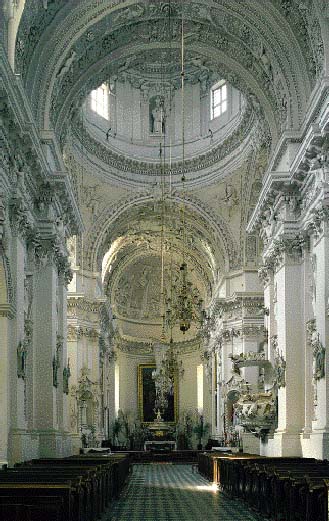
The unique interior of the Saints Peter
and Paul | Architectural Diversity Vilnius' architectural diversity - its many churches and towers, fortifications, secluded medieval courtyards and narrow streets are a testimony to the city's rich history. It is a place where the greatest architectural styles of Europe, i.e. gothic, renaissance, baroque and classical stand side by side and compliment each other. Among the oldest gothic buildings in Vilnius is a group of castles constructed between the 14th and 16th centuries. The church of Saint Anne is considered by many to be a gothic masterpiece. The renaissance had a short-lived influence on the city although the movement has left some striking monuments, notably the 16th century MedininkŇ≥ (AuŇ°ros) Gates of the defense wall, Saint Michael's church, and some of the University courtyards. Incidentally, the University of Vilnius happens to be one of the oldest universities in Europe, established in the year 1579. The 17th century Saints Peter and Paul's church is the pearl of Vilnius' baroque architecture. Its interior is adorned with approximately 2,000 biblical, mythological and historical statues. Classicism reached Vilnius by the end of the 18th century, giving the city its City Hall, the Verkiai Manor and the Cathedral. An outstanding Lithuanian architect, Laurynas Stuoka-Gucevińćius, designed the Cathedral on the idea that the beauty of a building should not be determined by its ornamentation, but by the harmony between its parts and the whole. |
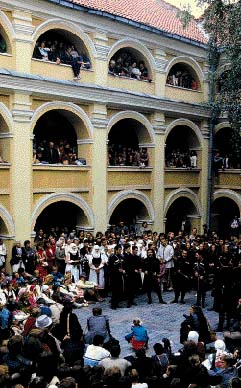
A Folklore Festival taking place in an
Old Town courtyard. | Cultural Life Today Vilnius serves as Lithuania's centre of political, economic and cultural life. It has seven professional theaters, several symphony and chamber orchestras, quartets, and other performing arts groups. Vilnius' Youth Theater, the Lithuanian Chamber Orchestra, National Symphony and the Lithuanian State Symphony Orchestra have all been internationally acclaimed. In 1996, one of the European Union's leading cultural programs, the "Baroque Road", was launched in Vilnius. |
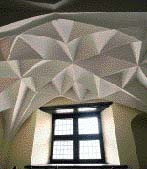 KAUNAS - THE CRADLE OF LITHUANIAN CULTURE AND TRADITION
KAUNAS - THE CRADLE OF LITHUANIAN CULTURE AND TRADITION
Lithuania's second largest city, Kaunas, is situated at the confluence of the Nemunas and Neris rivers, closer to what would be Lithuania's geographical centre. The city is an important industrial and cultural centre with an approximate population of 415,000.
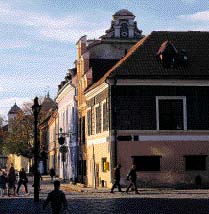
16th-17th Century Residential Houses. | A Historic City The earliest known references to Kaunas appear in records dating from 1361. The city's old town, picturesquely dominating the junction of two rivers, is a fascinating combination of archaeology, architecture and history. Here one finds the remains of a castle dating back to the 13th to 16th centuries standing as evidence of the ancient battles between Lithuania and the knights of the Teutonic Order. Numerous other buildings crowd together in a stimulating mixture of the arts and architecture of different eras. The 15th century produced the church of Vytautas, Saint George's church and the reconstructed Cathedral. City Hall, dating from the 16th to 18th centuries, is surrounded by charming old houses; the PerkŇęnas (Thunder) House dates back to the 15th century. Some of the city's structures are recognized as representing a distinct variation of the Northern European Renaissance style, notably the Church of the Holy Trinity and the Masalskis Manor complex (16th to 18th century). |
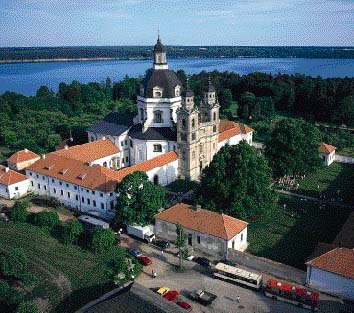
The PaŇĺaislis Monastery | The Baroque Era The most outstanding baroque monument is the PaŇĺaislis monastery, a collection of buildings dating from the 17th and 18th centuries. This is among the most lovely of examples of ecclesiastical architecture in Northern Europe, unified architecturally by its hexagonal design and a majestic cupola, with its faŇ°ade proportioned according to the principles of Italian baroque, and its interior decorated with subtly coloured frescoes and statues. |
Vibrant Cultural Traditions
Kaunas is a city of very old and established cultural traditions and a place where generations of Lithuanian artists, composers and writers lived and have left their imprint. Their works are on display in various museums and galleries, of which two are especially notable. The Art Gallery of M. K. ńĆiurlionis displays the work of this great painter and composer, who earned his place in the history of art. The largest collection of paintings is located at a gallery dedicated to Mykolas ŇĹilinskas, a man who in his lifetime was a great patron of the arts.
Military Memories
It is possible to review Lithuania's history from its prehistory to the present day, at the Military Museum of Vytautas the Great. Among the most interesting exhibits is a memento of an early transatlantic flight - a wreck of the "Lituanica." In this plane, two pioneering Lithuanian aviators, Steponas Darius and Stasys Girńónas, flew non-stop from New York in 1933, sadly crashing in German territory, not far from their final destination in Lithuania.
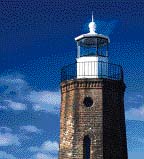 KLAIPńĖDA - A PORT CITY ON THE BALTIC
KLAIPńĖDA - A PORT CITY ON THE BALTIC
A Historic Seaport
Lithuania's third largest city is located at the narrow strait linking the Curonian Lagoon to the Baltic Sea. Today, Klaipńóda has a population of more than 206,000 and is vital to Lithuania's economy as the country's main seaport.
Archaeological evidence reveals that this area was once densely populated by the Balts, ancestors to Lithuanians. From the 9th century, their lands were perpetually raided by the Vikings. From the 13th century, the site suffered new invasions by German feudal lords and the Teutonic Order. In a move to consolidate its governance over the territory, in 1252 the Order erected a castle on the delta of the river Danńó, named it Memelburg and used it to control the strait between the mainland and the Curonian Spit. After this, Lithuania's main waterway trade route via the Nemunas river to the Curonian Lagoon, Baltic Sea and so to Gotland and Scandinavia was sealed shut.
The site, now controled by the Teutonic Order, was a natural harbour around which a town soon developed (to the east of the castle). In some years the town of Memel was granted similar rights as had the Hanseatic towns of Dortmund (1254) and Lubeck (1258). But, it was a foreign encroachment, a tiny wedge of German territory carved out of Lithuania and for many centuries the native people were subjected to political and economic oppression and denied their true identity. This situation only changed with the Treaty of Versailles after World War I, which took the territory from Germany and temporarily placed it under French control. In 1923, the Lithuanian government seized control of the Klaipńóda region from the French, the region was soon recognized a part of Lithuania by the international community.
Klaipńóda today - an Ancient Town and a Modern City
Klaipńóda has developed into a modern city, with the characteristic quays and warehouses of a port, and with clusters of old German fachwerk buildings. The city centre has an eclectic mixture of buildings in various styles, including the old City Hall, the neo-gothic Post Office, the former Louise Gymnasium, the theatre and some private houses. The old town itself is laid out in a rectangular network of streets dating from the 13th to 15th centuries, where it is still possible to see remains of the old castle and citadel, sections of the castle towers, ramparts, bastions, ditches, ravelins and other medieval defenses. At Kopgalis, a restored fortress houses a Marine Museum, Aquarium, and dolphinarium.
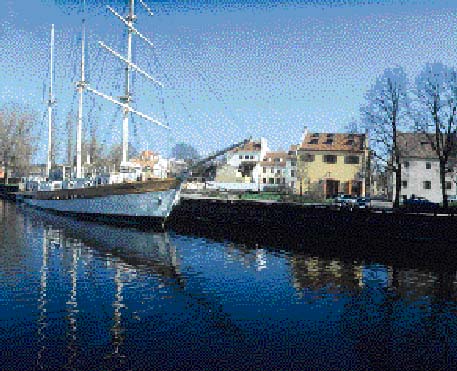
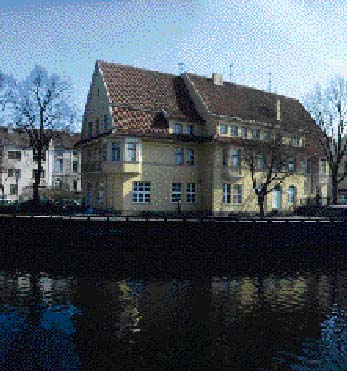
Klaipńóda's Old Town was formed in the 15-16th centuries on the bank of the Danńó river
 Monument to poet Simon Dach with his song sung Anichen from Tharau.
Monument to poet Simon Dach with his song sung Anichen from Tharau.
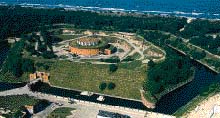 The Kopgalis Fortress is today a Marine Museum.
The Kopgalis Fortress is today a Marine Museum.
 Fachwerk building construction characteristic of the Old Town
Fachwerk building construction characteristic of the Old Town
 ҆IAULIAI - NORTHERN LITHUANIA AND ITS SPIRITUAL CENTRE
҆IAULIAI - NORTHERN LITHUANIA AND ITS SPIRITUAL CENTRE
Inland to the east of Klaipńóda stands the old town of ҆iauliai dating back to the battle of Saulńó in 1236, when the samogitians under the leadership of duke Vykintas defeated the Germanic knights of the Livonian Order. The subsequent history of ҆iauliai included battles with the Swedes, suffering the plague and fires, yet on many occasions over the succeeding centuries it grew into a prosperous centre.
The 750th anniversary of the battle of Saulńó was commemorated by an erection of a 21 metre high sundial topped by an archer of gilded bronze, and is today one of the many sights of ҆iauliai. Another sightseeing "must" in today's city of pedestrian precincts and church music festivals is the magnificent Church of Saints Peter and Paul, built in 1634.
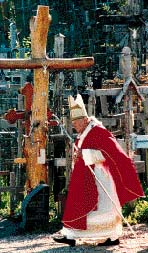
Pope John Paul II at the Hill of Crosses | The Hill of Crosses One of the most unforgettable and emotional sites in Lithuania is located 12 km from ҆iauliai, next to the Vilnius - Riga motor way. It is the Hill of Crosses - a shrine for many Catholics. The initial hundreds of crosses which were set at this location to honour the dead after the rebellion of 1831 was suppressed by the Tzarist authorities. When Soviet authorities took power in Lithuania after World War II they tried to remove the crosses on many occasions. But the crosses always secretly replaced by people overnight. Today, more than 50,000 crosses are a testimony to the spirit of the Lithuanian people. The hill was visited by Pope John Paul II during his 1993 trip to Lithuania. |
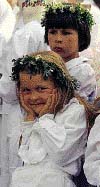 LIVING FOLKLORE AND ETHNIC TRADITIONS
LIVING FOLKLORE AND ETHNIC TRADITIONS
Written Folklore
Most written folklore dates back to medieval times. The three main branches of written folklore are songs, narration and sayings. Of these, songs are the most numerous and the most important covering a wide range of subjects of concern to ordinary people at the time of their creation. Whether about mythology, rites, history, military battles, weddings, children, or just simply work, these songs best reflect the character of Lithuanian folklore.
An Architecture of the People
Traditional Lithuanian folk architecture constitutes a unique part of north-eastern European folk architecture. Not only did it influence architecture in other territories populated by Lithuanians such as Lithuania Minor, West Belarus and north-eastern Poland, but it also shares many common features with Latvian, Western Belorussian and Polish (Mazovian) folk architecture. Characteristic features of towns and villages include a central square and a regular network of streets, while trees and shrubs are used in a way to create harmony with the local environment.
A Unique Folk Art
The main characteristics of folk art are simple shapes, clear composition, symmetrical patterns and moderate colours. Before industrialization, the everyday use of applied and decorative arts was widespread in being applied to fabrics, ceramics, wood carvings, metalwork and amber ornaments. The most popular designs were made up of stylized geometrical patterns, floral and animal shapes, and small suns.
Decorative Easter eggs - marguńćiai - still constitute a very special and popular type of Lithuanian folk art. Still today, the Easter eggs are normally either engraved with a sharp tool or given patterns by the application of bees wax. Even more skilled were the depictions of Biblical scenes by the peasantry. Skilled local craftsmen also carved wooden statues of the Christ of Sorrows - the so-called RŇępintojńólis - which were attached to outdoor crosses or placed in miniature outdoor chapels. Works of folk art created in the spirit of these old traditions are continued to be made by Lithuanian craftsmen which are possible to find on sale in shops and at fairs during festivals.
A Museum of Country Living
An open-air Country Life Museum was established at RumŇ°iŇ°kńós in 1966 in order to help preserve and research the past ways of living. Entire buildings and artifacts from towns, villages and farmsteads from all over Lithuania have been brought to this place and reassembled. They date from the second half of the 18th to the first half of the 20th century and are well worth seeing. The museum also stages folk song, folk dance and other ethnic events. It is located 18 km east of Kaunas between the Kaunas-Vilnius motor way and the Kaunas Basin.
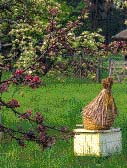
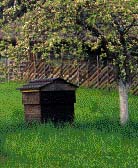
ETHNIC HOLIDAYS
UŇĺgavńónńós
This is Shrovetide, marking the end of winter. Masked people dressed in costume roam from house to house to feast and enjoy themselves. After midnight an effigy called Morńó symbolising winter and dressed in women's clothing is set on fire. Blynai (pancakes) are served as the traditional Shrove Tuesday dish.
Kaziukas Fair
This fair is held in Vilnius from March 3rd to 5th. A wide range of hand crafted goods are sold in the city's marketplaces, squares and streets. Among the most popular are wooden and straw household wares, ceramics, amber and leather goods, and Verbos - the region's traditional Palm Sunday flowers.
April First
A traditional day of pranks. People usually join in various games and participate at evening competitions held for the best "practical" jokes and humorous performances.
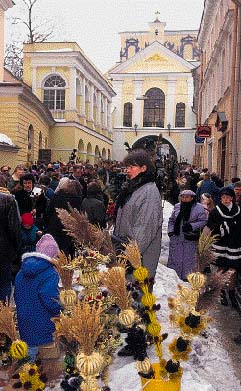 | Palm Sunday On this Sunday before Easter, Juniper twigs are brought to church to be blessed, and, according to tradition, are only then believed to protect from sickness and evil spirits. In the Vilnius region, the use of Juniper twigs have been exchanged by decorative interwoven bunches of multicoloured dried plants, flowers and corn ears today regarded as authentic works of folk art. |
Joninńós
June 24th is a festival in marking the summer solstice. It was first recorded to have taken place in the 14th century. It was believed that on this the shortest night of the year plants and water acquired special powers for healing illnesses or the ability to increase the fertility of farmland. Customs associated with the feast have retained their popularity to this day. Bonfires are lit, wreaths are floated on water, and every year people search the forest for the legendary blooming flower of the fern. The festival ends with the rising of the sun the following morning.
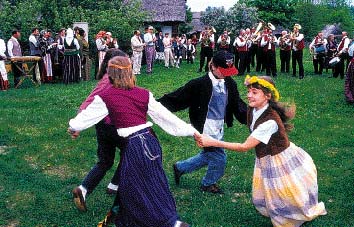 Folklore Festival at the Country Life Museum.
Folklore Festival at the Country Life Museum.
 AMBER - LITHUANIAN GOLD
AMBER - LITHUANIAN GOLD
Fossilized Resin
Amber has historically been thought of as Lithuania's gold. This part of the Baltic has always been a source of the precious aromatic substance so valued by the civilizations of the eastern Mediterranean. Always passed through so many traders' hands, no one was ever really sure where it came from.
Amber is actually the fossilized resin of pine trees belonging to forests which flourished in this region before the Ice Age around some 35 million years ago. Back then the subtropical climate cultivated trees with an abundance of resin, which eventually seeped from the trees and coagulated on the ground. Insects, plants and the hair of animals were often embedded in the resin, remains of which are now highly valued and of scientific interest. When the Ice Age came, the resin was buried where it hardened into amber, lying in sheets on the bed of what is today the Baltic Sea.
The substance was mined commercially in Lithuania for many centuries. Lumps of amber can still be found washed up on the coastal beaches after a storm.
BALTIC VACATIONS
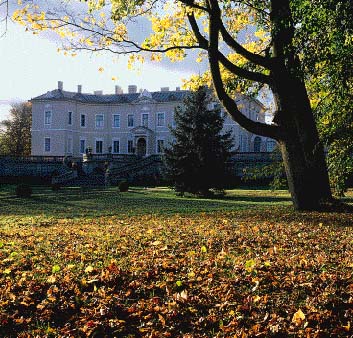
Amber Museum in Palanga | Palanga This resort on the shores of the Baltic Sea in north western Lithuania is noted for its various treatments. Palanga has a variety of balneological and mud treatment facilities. It is also a pleasant and interesting place to stay. Archeological sites dated from the 3rd and 2nd centuries BC testify that this part of the Baltic coast has been inhabited since prehistoric Neolithic times. Palanga eventually became an important centre for trade, especially of amber, and was well known to Hanseatic merchants. Over time, as its trading significance declined, the town developed into a resort. Palanga is packed with architectural and historical monuments, and its local Amber Museum houses a unique and rich collection of natural amber and amber artifacts. |
BirŇ°tonas
This resort town on a loop of the Nemunas river in central Lithuania is situated in a most lovely natural setting, which has been developed with much care and sensitivity. The resort offers therapy and recreation year-round.
Druskininkai
Situated in southern Lithuania on the right bank of the Nemunas river, the resort of Druskininkai has been shaped by nature itself. The surrounding pine forests, the picturesque valleys of the Nemunas and its tributary the Ratnyńćia river, lake Druskonis located right in the centre of town, and a small lake called Mergelńós Akys (or maiden's eyes) in a nearby forest, all contribute to what makes the town special. Druskininkai houses a memorial museum to painter and composer M. K. ńĆiurlionis (1875-1911), who once lived there.
 NATIONAL AND REGIONAL PARKS
NATIONAL AND REGIONAL PARKS
Five national parks have been established in various regions of Lithuania for the protection and study of the country?s diverse natural, cultural and historical heritage. Agricultural and recreational activities are restricted within their boundaries as the parks are administered according to a specifically designed programme. They are, however, open to visitors.
AukŇ°taitija and ŇĹemaitija National Parks feature moraine hills, uplands and strings of lakes created by the Ice Age.
DzŇękija National Park is a conservation area protecting plains and valleys, rivers, forests and inland dunes.
Trakai Historical National Park encompasses the medieval capital of Lithuania and its surrounding lakes and majestic countryside. The largest lake, Galvńó, is distinguished by a red brick castle fortress built in the 14th and 15th centuries on an island and seems to rise straight out of thewater. Ever since the 15th century, Trakai has been the home of a small Karaite community, which has succeeded in preserving its own religion, customs and culture within Lithuania.
The Curonian Spit National Park protects the unique sand spit which encloses Curonian Lagoon from the Baltic. Its long ridge of white sand dunes were formed by wind and water and is home to rare species flora and fauna. The dunes conceal old villages now buried beneath their sands, but there are several modern fishermen's settlements on the shores of the lagoon. These settlements are built in an architectural style unique to this coast and a legacy left by the ethnic Curonian balts who lived here until the end of the 16th century.
 There are 30 regional parks in Lithuania. Agricultural activity in these areas are controlled by environmental protection agencies. They are ideal for recreation and walks at any time of the year. Many of the parks protect small hills and sacred forests once an integrated part of pagan life in Lithuania.
There are 30 regional parks in Lithuania. Agricultural activity in these areas are controlled by environmental protection agencies. They are ideal for recreation and walks at any time of the year. Many of the parks protect small hills and sacred forests once an integrated part of pagan life in Lithuania.
LITHUANIA © Lithuanian State Department of Tourism, 1998







